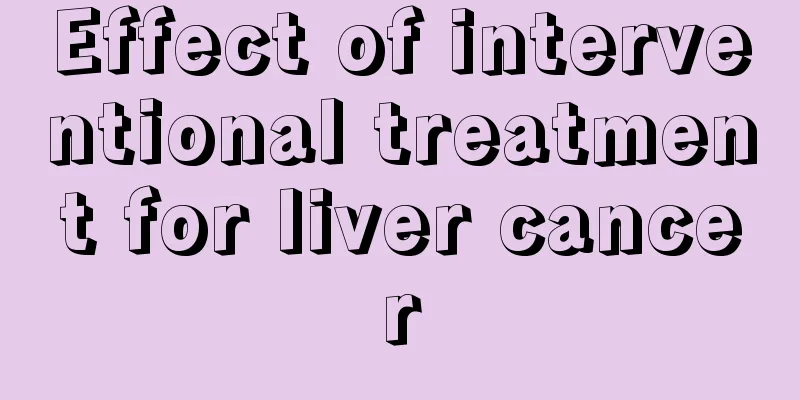Effect of interventional treatment for liver cancer

|
Interventional treatment of liver cancer is actually also a treatment method for liver cancer. However, we all know that because the risk of liver cancer is very serious, when choosing a treatment method, we must pay attention to the doctor's treatment advice. 1. In liver cancer, vascular interventional treatments mainly include selective hepatic artery perfusion therapy, selective hepatic artery embolization, and selective hepatic artery chemoembolization. Its main physiological basis is that 20%-25% of the blood supply to normal liver cells comes from the hepatic artery, and 75%-85% comes from the portal vein. 90%-95% of the blood supply for primary liver cancer comes from the hepatic artery, which provides an anatomical basis for vascular interventional treatment of liver cancer tumors. The specific technical methods of the three are the same, which is to puncture a small incision of about 3-5 mm on the skin, insert a catheter into the artery to supply blood to the liver cancer, and then administer the drug through the catheter. The difference lies in the different drugs given. 2. TAI treatment It is an intra-arterial infusion of drugs through a catheter at doses equal to or less than those given intravenously. This can increase the local drug concentration in the target cells, prolong the contact time between the drug and the lesion, and reduce the total drug dose in the body, thereby achieving the goal of improving efficacy and reducing side effects. The most commonly used drugs are chemotherapy drugs. The efficacy of chemotherapy drugs is positively correlated with the effective blood concentration of the drugs at the tumor site and the contact time between the drugs and the tumor. 3. TAE The embolic agent is selectively injected into the tumor blood vessels and tumor blood supply arteries through a catheter to block the tumor blood supply and seal the tumor vascular bed, thereby inhibiting tumor growth. This is equivalent to "starving" the tumor to death. Commonly used embolic agents include gelatin sponge, super-liquid iodized oil, sodium alginate microspheres, etc. Transarterial chemoembolization (TACE) is the administration of both chemotherapy drugs and embolic agents through a catheter. There are two ways to eliminate tumors. |
<<: What does night sweats mean
>>: Is liver cancer contagious?
Recommend
Can I still get pregnant with stage 2 prostate cancer?
Prostate cancer is a common disease among men. Th...
How to treat xanthomas that affect appearance?
In daily life, some people may find yellow lumps ...
What oil to eat for breast cancer
What oils should I eat for breast cancer? Breast ...
What causes deafness?
Just imagine that one day you can no longer hear ...
What to do if your armpits sweat when you are nervous
It is inevitable that everyone will get nervous s...
Nystagmus examination method
Eye disease is a type of health problem that ever...
Can I drink water while exercising
Fitness has become an indispensable course in peo...
What are the dangers of fever caused by lung cancer
What are the hazards of fever caused by lung canc...
Eating these three types of food is more effective in preventing cancer! More reliable than health supplements
When it comes to cancer, many people feel scared ...
What are the harmful manifestations of liver cancer
As we all know, liver cancer is a very terrible d...
Is bile duct cancer serious?
Is bile duct cancer serious? This is a question t...
After cupping, the skin turned black and purple and it hurts
Nowadays, people have paid more and more attentio...
There is a trace of blood in the urine
Under normal circumstances, people need to defeca...
The liver cancer has spread to the blood vessels in the late stage. The doctor said that I can only live for three to six months. What should I do now?
The liver cancer has spread to the blood vessels....
The harm of ozone layer depletion affects human health
The main function of the ozone layer is to absorb...









